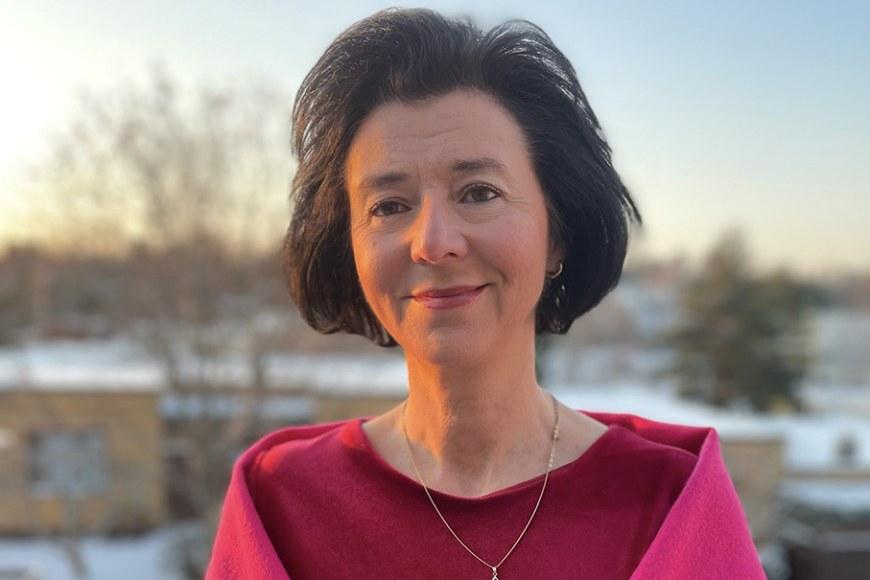
The psychiatric interview aims to evaluate multifaceted mental problems of patients based on descriptive, symptom-oriented diagnostic categories (codified in DSM/ICD).
The psychiatric diagnostic classification alone does not allow for planning for the patient the necessary individual psychosocial treatment and rehabilitation. Nonetheless, in public healthcare, client-/patient-centredness - i.e., an approach based on the individual needs of the patient - should be the guiding legal and ethical principle. The dissertation of Enikö Éva Savander is an attempt to investigate and advance the psychiatric assessment procedure and interview from a patient-centred perspective.
The randomised controlled pilot study investigated and compared the usual clinical psychiatric diagnostic assessment - Assessment as Usual (AAU group) and a so- called, case formulation-based assessment process.
The Dialogical sequence analysis (DSA) was implemented as a case formulation method. From the very first encounter, DSA, as a method, facilitates comprehending of the patients' adverse, habitual action patterns (so-called obstacles to agency), which may affect and maintain symptoms and mental problems. Its purpose is to complement the psychiatric diagnostic assessment process.
The analytical unit of DSA is the speaker's stance towards the referential object, i.e., the content s/he is talking about, and towards the recipient to whom s/he is talking to. All these convey reciprocal relationship which is one of the key guiding concepts of DSA-based case formulation.
In the study, 40 patients were randomised into two study groups (AAU group, N = 40; DSA group, N = 40). At baseline, the groups did not differ in terms of perceived well-being, mental symptoms, functioning or risk behaviour. The research data was also collected by audio-recording the interviews of the first visits of all patients in the DSA group and five randomly selected patients in the AAU group. At the last assessment visits, the patient, and the clinicians (each separately) assessed the quality of the working relationship using a self-reported questionnaire (Working Alliance Inventory, WAI). The duration and number of assessment visits and the number of clinicians who had participated in the assessment phase for all patient, were also measured.
The research material was analysed by quantitative as well as qualitative methods. Ten audio-recorded interviews of the first sessions were examined using the Conversational Analysis (CA) as a qualitative study revealed that in the DSA group the patient's and the clinician's appraisals were convergent concerning the treatment goal (rho = .63), tasks (rho = .66), bond (rho =.56); nonetheless, in the AAU group, only the treatment bond displayed a moderate convergence (rho = .36) between appraisals. The assessment period was shorter (p < 0.001) and the number of visits were fewer (p = 0.002) in the DSA group than in the AAU group. The analysis of interviews focused on the topical content of the utterances: whether they concerned medical matters or the patients' subjective experience. In the DSA-based interviews, the patients described their negative subjective experiences significantly more frequently than in the AAU interviews (p = 0.016).
Regardless, whether the clinician's question was a closed-ended question focused on symptoms, or an open-ended question that focused on the patient's experiences reported, in both groups, the patients also tended to disclose their experiences. Because in the DSA group clinicians focused on the patient's experiences, the patients also produced more talk about subjective experiences than in the AAU group.
Moreover, CA revealed that after the clinicians' symptomatically and factually oriented questions, the patients presented that their "self-disclosure" about subjective experiences is legitimated. In presenting so, the patients, in their utterances, highlighted the intensity and urgency of the experience telling, thus momentarily taking space and control in the interview. The analysis revealed that the clinicians' and the patients' goals and orientations were occasionally divergent and even clashing. These qualitative results call for the further need to clarify the meaning and function of patient-centredness with larger research material in the future.
The conclusion of the study is that the DSA-based assessment may refine and complement the diagnostic assessment procedure, advancing a common view - shared understanding - of the patient's individual treatment plan tending to be patient-centred. By implementing DSA-based case formulation, the treatment could start earlier than in the standard assessment process.
In the future, more studies should be carried out with larger sample sizes to investigate the impact of the treatment on outcome measures and the cost-effectiveness of DSA-based case formulation in a larger clinical field.
The doctoral dissertation of M.D. Enikö Éva Savander in the field of medicine titled Dialogical Sequence Analysis as Case Formulation in Community Mental Health Centre: Naturalistic comparative study on Patient-centred approach will be publicly examined at the Faculty of Medicine and Health Technology of Tampere University at 12 o'clock on Friday 28 January, 2022. The venue is Päijät-Häme Central Hospital's lecture halls 1 and 2, address: Keskussairaalankatu 7, Lahti. Professor Markku Timonen from University of Oulu will be the opponent while Professor Jukka Hintikka from Tampere University will act as the custos.
The event can be followed via remote connection.
The dissertation is available online at
https://urn.fi/URN:ISBN:978-952-03-2217-5
Photo: Monica Savander-Elivuo
